Boubakr Nour
Communication and Computation O-RAN Resource Slicing for URLLC Services Using Deep Reinforcement Learning
Feb 13, 2022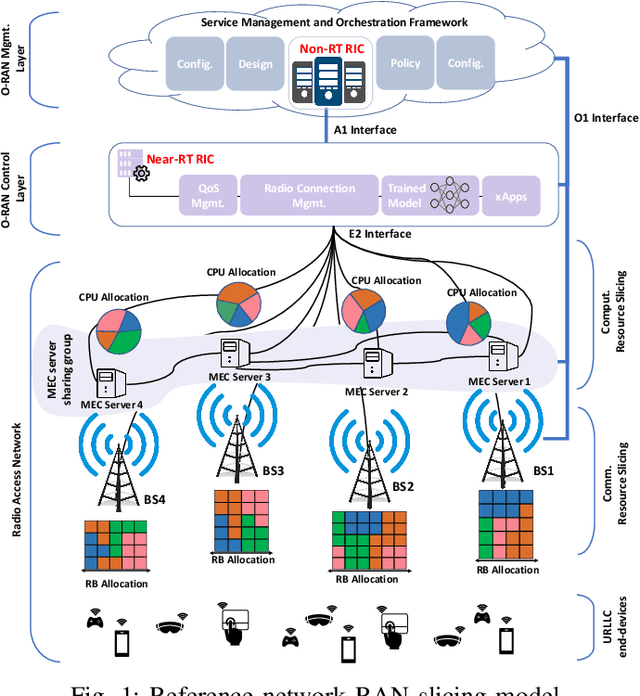
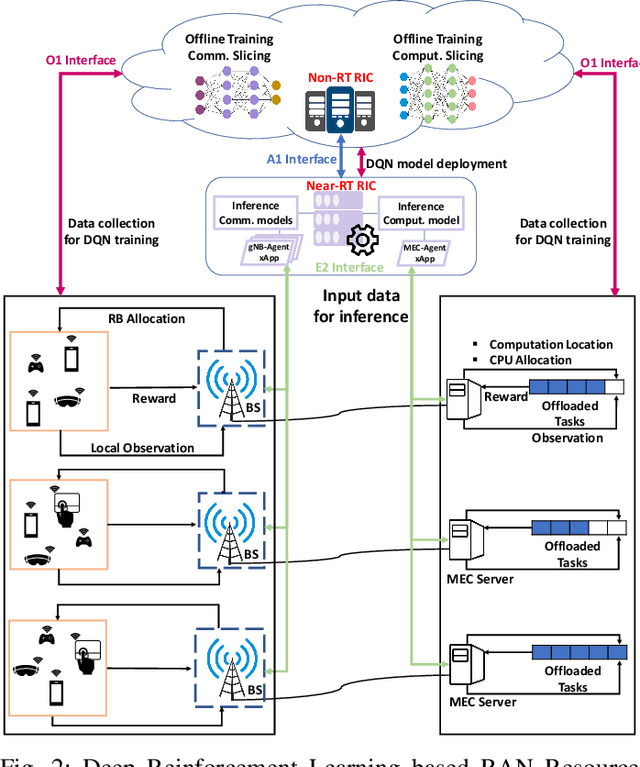
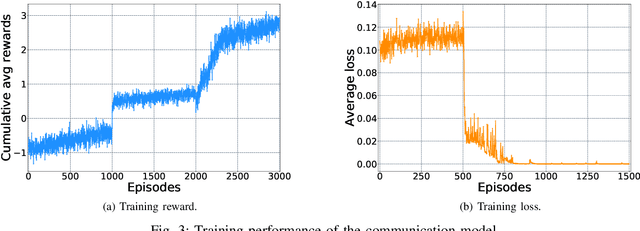
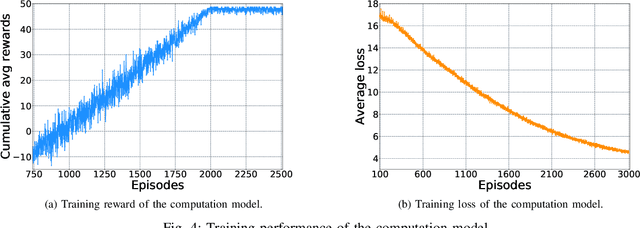
Abstract:The evolution of the future beyond-5G/6G networks towards a service-aware network is based on network slicing technology. With network slicing, communication service providers seek to meet all the requirements imposed by the verticals, including ultra-reliable low-latency communication (URLLC) services. In addition, the open radio access network (O-RAN) architecture paves the way for flexible sharing of network resources by introducing more programmability into the RAN. RAN slicing is an essential part of end-to-end network slicing since it ensures efficient sharing of communication and computation resources. However, due to the stringent requirements of URLLC services and the dynamics of the RAN environment, RAN slicing is challenging. In this article, we propose a two-level RAN slicing approach based on the O-RAN architecture to allocate the communication and computation RAN resources among URLLC end-devices. For each RAN slicing level, we model the resource slicing problem as a single-agent Markov decision process and design a deep reinforcement learning algorithm to solve it. Simulation results demonstrate the efficiency of the proposed approach in meeting the desired quality of service requirements.
Empowering Prosumer Communities in Smart Grid with Wireless Communications and Federated Edge Learning
Apr 07, 2021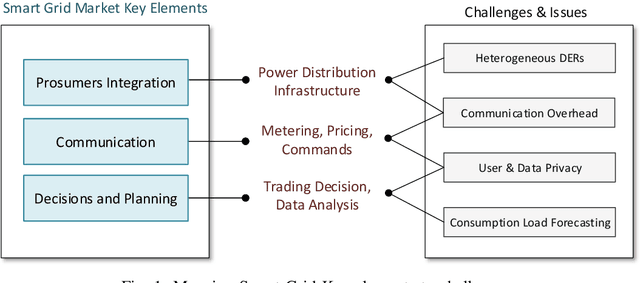
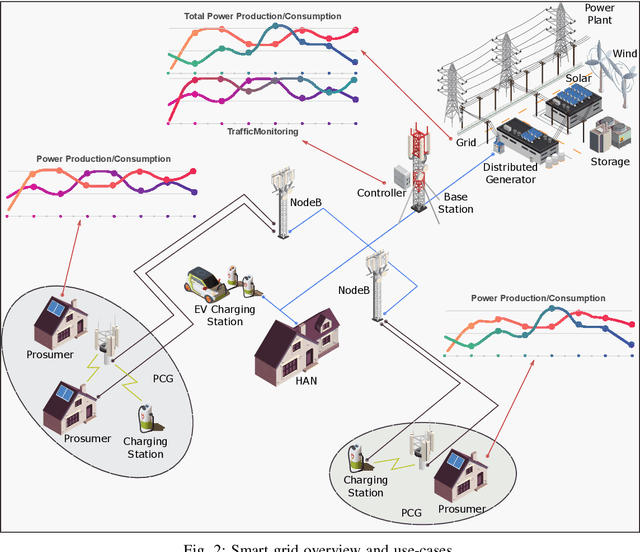
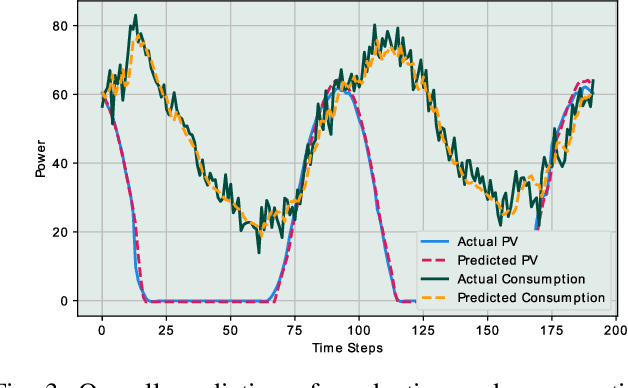
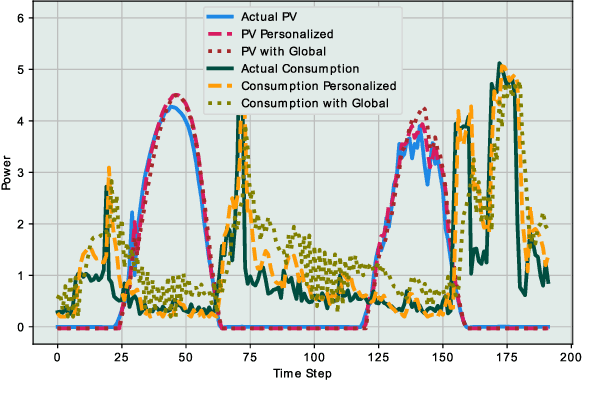
Abstract:The exponential growth of distributed energy resources is enabling the transformation of traditional consumers in the smart grid into prosumers. Such transition presents a promising opportunity for sustainable energy trading. Yet, the integration of prosumers in the energy market imposes new considerations in designing unified and sustainable frameworks for efficient use of the power and communication infrastructure. Furthermore, several issues need to be tackled to adequately promote the adoption of decentralized renewable-oriented systems, such as communication overhead, data privacy, scalability, and sustainability. In this article, we present the different aspects and challenges to be addressed for building efficient energy trading markets in relation to communication and smart decision-making. Accordingly, we propose a multi-level pro-decision framework for prosumer communities to achieve collective goals. Since the individual decisions of prosumers are mainly driven by individual self-sufficiency goals, the framework prioritizes the individual prosumers' decisions and relies on 5G wireless network for fast coordination among community members. In fact, each prosumer predicts energy production and consumption to make proactive trading decisions as a response to collective-level requests. Moreover, the collaboration of the community is further extended by including the collaborative training of prediction models using Federated Learning, assisted by edge servers and prosumer home-area equipment. In addition to preserving prosumers' privacy, we show through evaluations that training prediction models using Federated Learning yields high accuracy for different energy resources while reducing the communication overhead.
An Experimental Analysis of Attack Classification Using Machine Learning in IoT Networks
Jan 10, 2021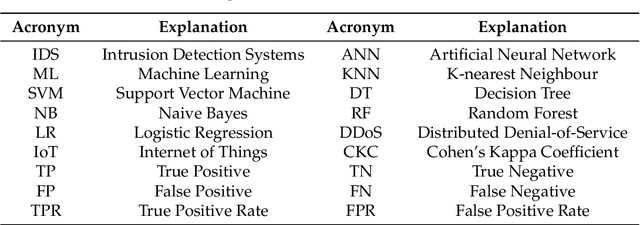


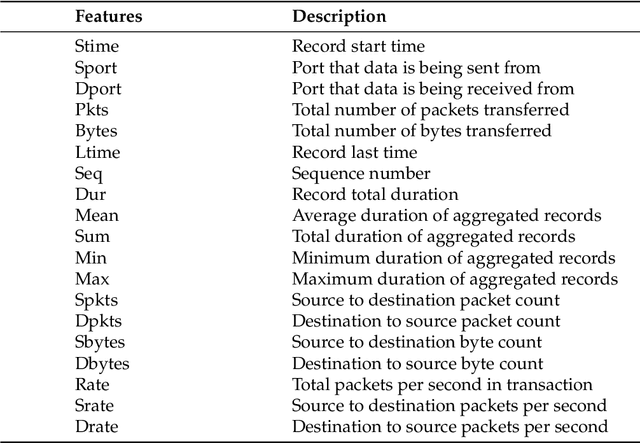
Abstract:In recent years, there has been a massive increase in the amount of Internet of Things (IoT) devices as well as the data generated by such devices. The participating devices in IoT networks can be problematic due to their resource-constrained nature, and integrating security on these devices is often overlooked. This has resulted in attackers having an increased incentive to target IoT devices. As the number of attacks possible on a network increases, it becomes more difficult for traditional intrusion detection systems (IDS) to cope with these attacks efficiently. In this paper, we highlight several machine learning (ML) methods such as k-nearest neighbour (KNN), support vector machine (SVM), decision tree (DT), naive Bayes (NB), random forest (RF), artificial neural network (ANN), and logistic regression (LR) that can be used in IDS. In this work, ML algorithms are compared for both binary and multi-class classification on Bot-IoT dataset. Based on several parameters such as accuracy, precision, recall, F1 score, and log loss, we experimentally compared the aforementioned ML algorithms. In the case of HTTP distributed denial-of-service (DDoS) attack, the accuracy of RF is 99%. Furthermore, other simulation results-based precision, recall, F1 score, and log loss metric reveal that RF outperforms on all types of attacks in binary classification. However, in multi-class classification, KNN outperforms other ML algorithms with an accuracy of 99%, which is 4% higher than RF.
 Add to Chrome
Add to Chrome Add to Firefox
Add to Firefox Add to Edge
Add to Edge